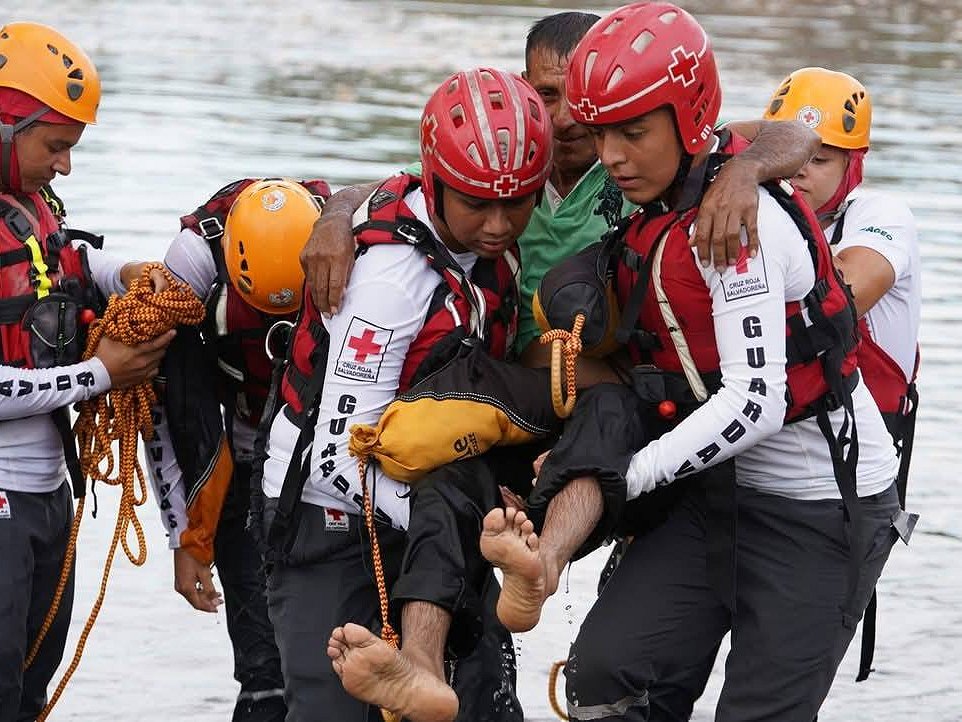
Red Cross scales up training and preparedness for Atlantic hurricane season

By the IFRC
(This story appeared first on the IFRC website on Friday. It has been edited here for length.)
With the Americas region now well into the 2025 hurricane season, Red Cross teams in the region have been busy working alongside communities to prepare for what forecasters say will be yet another above-normal storm season.
But even an average hurricane season can have devastating consequences for the people, as all it takes is one storm to affect entire towns and cities. That is why Red Cross preparedness work was already well underway even before this year’s forecast.
The National Societies of Honduras, Guatemala and El Salvador are among the most vulnerable to these extreme events due to their geographical location. The scale of the preparedness work now going on across the Americas is largely due to the experience with extremely devastating storms in the past – in particular Hurricane Mitch in 1998.
Hurricane Mitch’s devastating passage left more than 11,000 people dead and millions affected, marking a turning point in the way National Societies in the region prepare for such extreme events. For people involved in emergency response and risk reduction, the storm was a game changer.
Two decades later, in 2020, hurricanes Eta and Iota affected more than 7 million people, most of them – more than 4 million – in Honduras, Nicaragua, and Guatemala, the countries that had also been hardest hit by Mitch.
But the results were different. In the time between one tragedy and another, the region and humanitarian organizations prepared in advance with response plans, training, drills, and institutional strengthening to reduce the impact of these disasters. This allowed the number of fatalities from Eta and Iota to be much lower than that of Mitch.
Here are just a few of the many ways Red Cross National Societies in the region are working to get ahead of the storms and help communities prepare.
‘This strategy has significantly reduced response times’
The Salvadoran Red Cross has contingency and response plans, which allow for more agile responses to extreme rainfall and landslides caused by tropical storms and hurricanes. According to Omar Ayala, Head of Crisis and Disasters at the National Society, it has pre-positioned materials for humanitarian aid in its branches, guided by the national Hazards Observatory’s forecasts.
“This strategy has significantly reduced response times: what could previously take up to two days is now done in just two hours,” Omar says.
The Salvadoran Red Cross has also recently signed a letter of understanding with the Hazards Observatory: “This agreement allows us to access weather forecasts early to be better prepared for the eventual arrival of a hurricane,” says Omar.
In Honduras, Red Cross teams have invested in technical training for volunteers and staff in topics such as water rescue, pre-hospital care, cash transfer systems, water, sanitation and hygiene, and unmanned aerial systems.
The Red Cross there also highlights its investment in early warning systems, implemented in watersheds such as the Chamelecón and Aguán river basins.
“The experience with Tropical Storm Sara, the last of the 2024 hurricane season, which affected more than 300,000 people in Honduras, showed the value of communities taking ownership of these early warning systems. That preparedness saved lives,” says Manuel Isaula, Risk and Disaster Manager for the Honduran Red Cross.
“Effective coordination between government, non-government, and community organizations to ensure the appropriation of knowledge, risk analysis, monitoring, and response capacity was and will always be key in our preparedness and response plans.”
‘EAPs help us provide a better response where it’s needed most’
Teresa Marroquín, Director of Risk and Disaster Management at the Guatemalan Red Cross, says the National Society has strengthened its hurricane response capacity through several key actions.
“Early Action Plans funded by the IFRC have been developed to respond to flooding caused by extreme storms,” Marroquin says.
“One successful example was the activation of Early Actions Plans during Tropical Storm Julia in October 2022, which helped us to provide a better response to those who needed it most.” Close coordination with official weather forecasting sources is key to improving the effectiveness and efficiency of humanitarian operations during the hurricane season.
Teresa also stresses the importance of developing contingency plans, providing training, and equipping volunteers for pre-hospital care and search and rescue in floods, especially in high-risk areas.
Another key element to prepare for the hurricane season within the Red Cross world is the continuous learning and training of National Society staff and volunteers.
In 2024, with support from the Reference Centre for Institutional Disaster Preparedness (CREPD) in the Americas, more than 6,000 people were trained, both online and in person, through courses and practical training at the regional level, with the aim of strengthening their knowledge in search and rescue, health, humanitarian assistance, and logistics coordination.
According to Edgardo Barahona, CREPD Coordinator, these training sessions, based on practical exercises and emergency simulations, not only strengthen the technical capacities of National Societies, but also promote comprehensive preparedness in line with IFRC global standards:
“They are a key tool for understanding the usefulness of response, contingency, and anticipation plans,” he says.
A team from the Salvadorean Red Cross takes part in a national emergency preparedness drill earlier this year that also included teams from the Ecuadorian and Guatemalan Red Cross. (Photo: CREPD via IFRC)